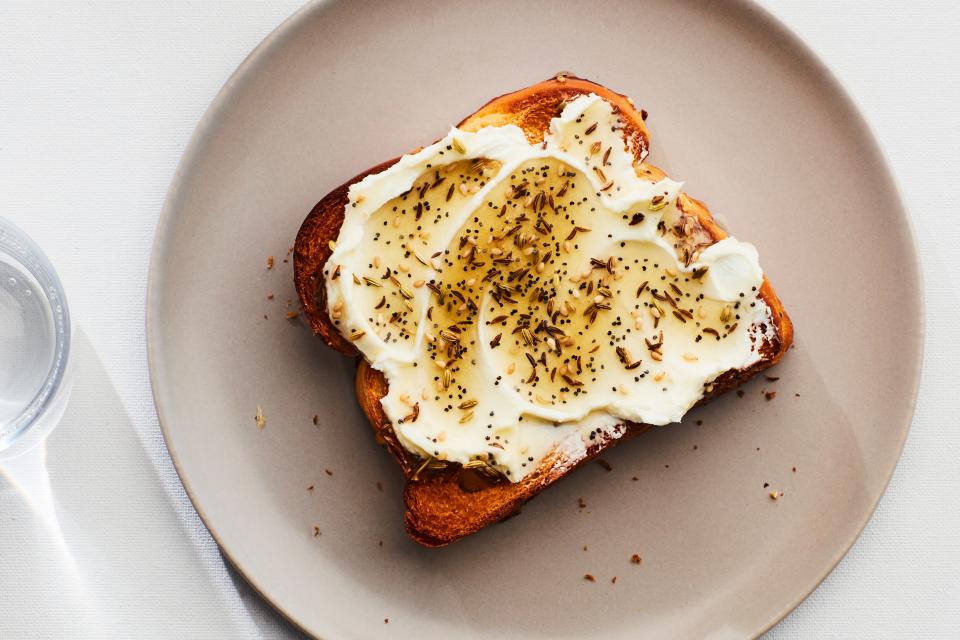How to Make Seeded Honey and Use It on Everything
The funny thing about my first brush with seeded honey was that I picked up the jar not knowing how I would use it. I bought it because it looked cool, and I was feeling bougie, and I'm an obsessive-compulsive man who collects honey jars like they're Barbie dolls.
My ambivalence lasted about an hour. Once I got the seeded honey into my kitchen, I immediately drizzled it over cheese. Soon thereafter I tossed carrots in the honey when they were ten minutes away from being fully roasted (I didn't add the honey at the beginning, fearing it would burn). I've now lacquered chicken with the honey, topped eggs with the honey, and eaten the seeded honey with a spoon.
I'm like a kid with a new toy. But seeded honey is, I now know, not so new. Still, it's new to me. If it's also new to you, you may, like me, be wondering how many ways you can use it. My expert answer is: many.
Dairy is a natural place to start. Seeded honey brings crunch to yogurt and cottage cheese. Seeded honey and goat cheese? It's the new peanut butter and jelly. (And speaking of peanut butter, I recently schmeared a thick piece of toast with the stuff and spooned a big puddle of seeded honey on top. A very all-day-café move.)
I don't remember how much money I spent on that first small jar of seeded honey. But I know I bought it at a lovely, twee cheese shop in one of those upstate New York towns that have become "rustic" playgrounds for rich people who aren't afraid to "mingle with the locals." In other words, I paid too much for it. So now I make my seeded honey at home.

Seeded Honey Inset 2
Here's how a recent batch went: In a dry skillet I toasted a spoonful each of fennel, sesame, and caraway seeds, swirling them in the hot pan just until the sesame seeds took on a golden-brown color. I tipped the seeds into a small bowl, let them cool, then stirred in a spoonful of poppy seeds. I had a more or less equal mix of seeds, but equality is not important—next time, I may double the fennel seeds, and I may take out the caraway altogether (it screamed where the other seeds sang). When my seed mix was ready, all that was left to do was stir it into honey. One tablespoon of mixed seeds for every 1/4 cup of honey is the right balance for me. For you? Who knows.
One day I will make seeded honey with big seeds, like sunflower seeds and pepitas. Maybe I'll make an all-fennel-seed honey, because those flavors love each other, and I love them as a pair. I can't see using my best, most distinctive honeys for seeded honey—I think a solid, basic honey is best—but I'll try it out with buckwheat honey, and maybe orange blossom honey, too. Why not? Seeded honey is a prime recipe to experiment with, because there's nothing to lose; when you combine seeds and honey, you only gain.
Originally Appeared on Epicurious

